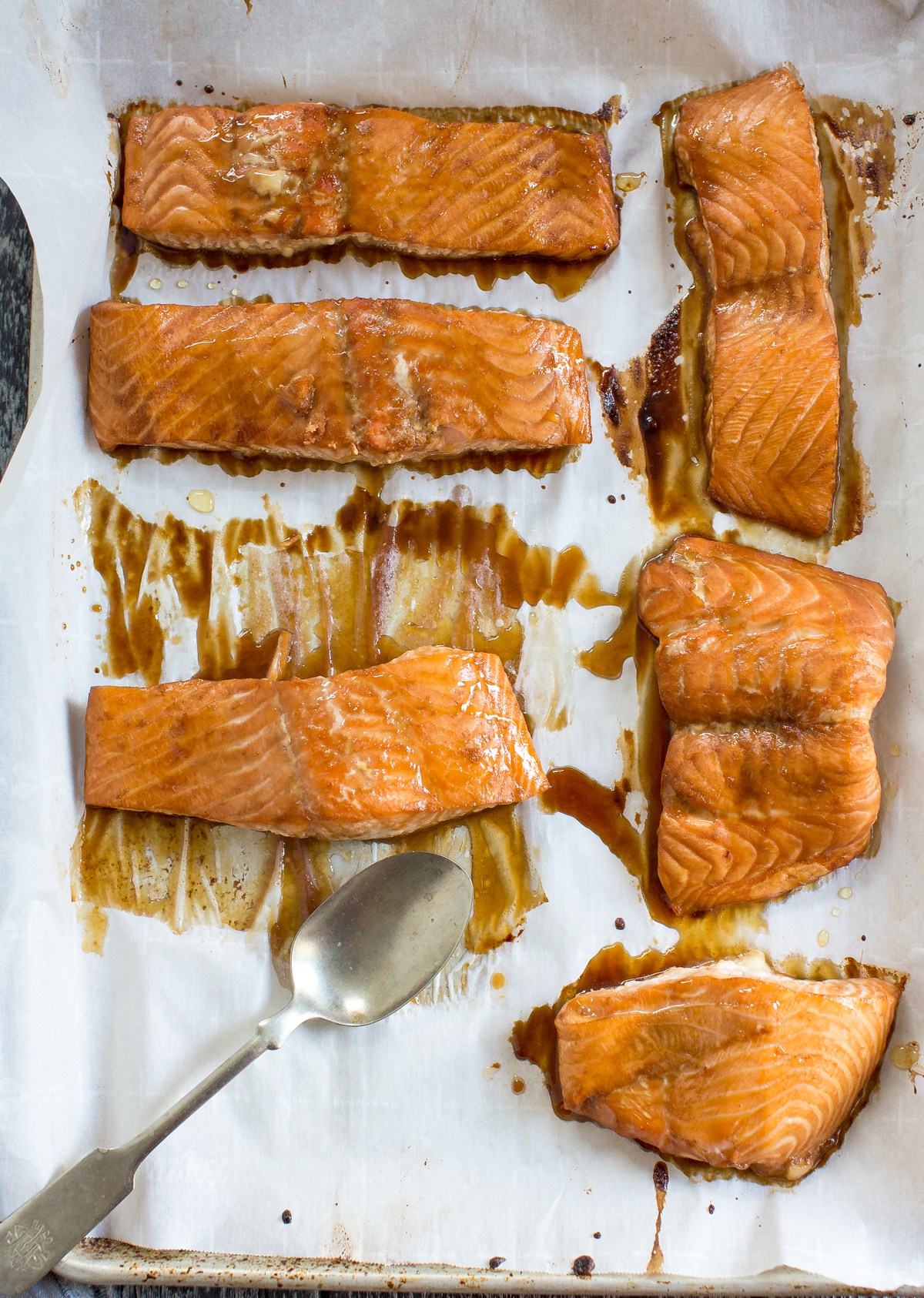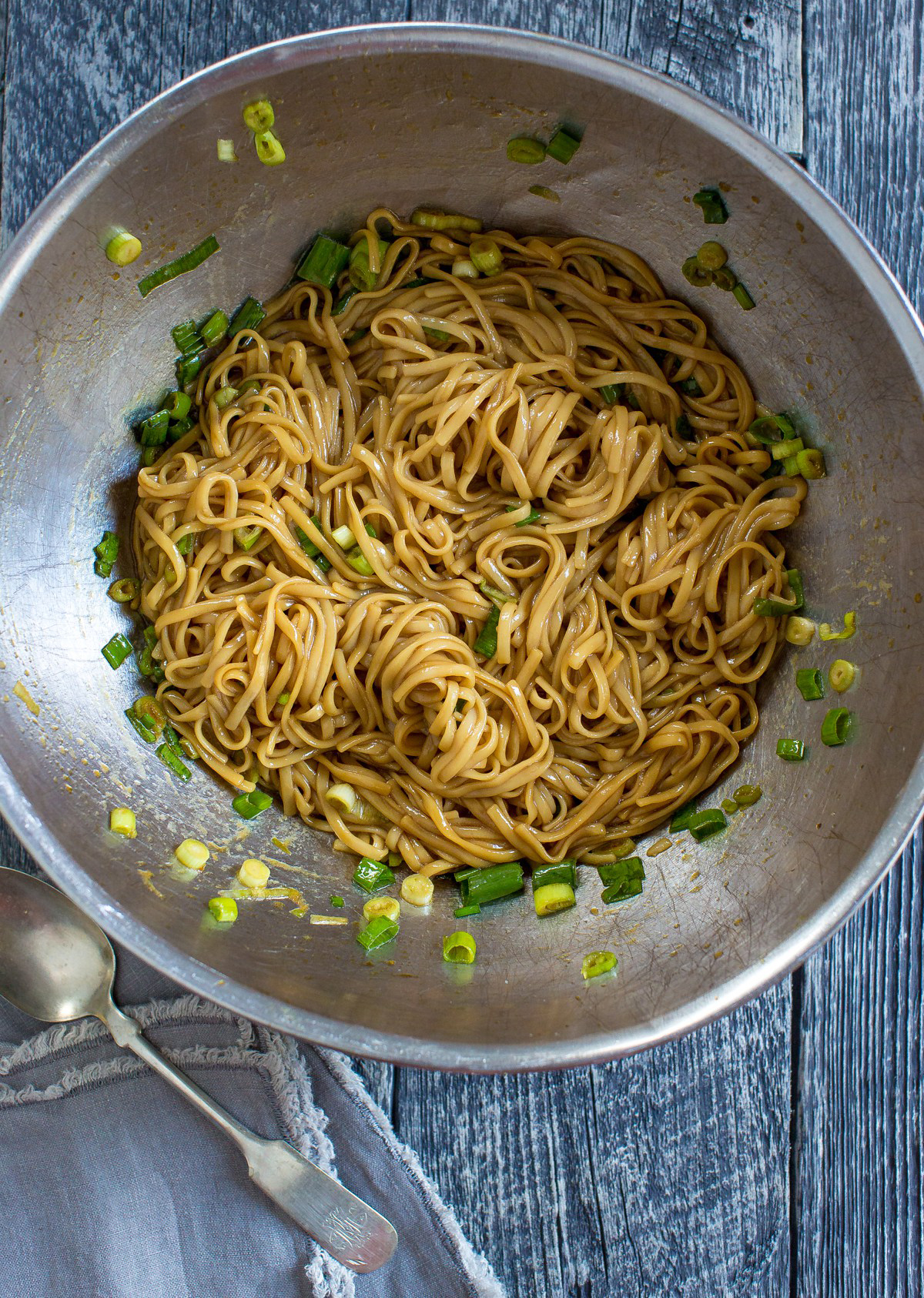Salmon and Sesame Noodles
This recipe and photos were provided by Sally Roeckell of Table and Dish and were originally published at 365Barrington.com
When schedules change and life gets a bit chaotic, easy really matters. Meals that offer big flavor and healthy nutrition – made quickly with little mess – are what I look for. It’s easy to offer non-processed, whole food choices while still keeping it simple.
Today I’m making two sauces and a seasoning you can keep on-hand that will add flavor to many things. Once made, they can add big flavor to the simplest meal.
I’m making a seasoning that I’ve recently learned about called Furikake. I’m Furikake obsessed. Wait … what in the world is Furikake? It is a Japanese seasoning that you can purchase ready-made but, typically, ready-made versions have MSG in them. If you are okay with MSG, then go get some! I personally can’t handle the effect MSG has on my body, so my easy homemade version is free of MSG.
Furikake is typically made with dried seaweed or nori sheets – the stuff they use to roll sushi, sesame seeds, sesame oil, sugar and salt. Some Furikake recipes call for katsuobushi (bonito fish flakes), which I find to be a bit too fishy tasting. You can find many variations of it; some spicy, some fishy, some flaky and some ground more fine. The recipe I use is the one we like best, but feel free to experiment with variations. It is great to have on hand to sprinkle on fish, chicken, rice, noodles and vegetables.
I am making a simple salmon noodle bowl that will take no more time to make than a frozen pizza. With the sauces and seasonings on hand, it’s as easy as baking the salmon and serving it with boiled pasta and a super easy steamed vegetable. Today I served it with simple steamed asparagus, but you can add your veggies of choice.
Salmon and Sesame Noodles
Ingredients
- 4 6oz. Columbia River King Salmon fillets
- 1 Tbsp. honey
- 12 oz. udon noodles (substitute with rice noodles or even spaghetti)
- 2 scallions, sliced
- Fresh cilantro and lime wedges, for serving
- Marinade (recipe below)
- Sesame sauce (recipe below)
- Furikake, for seasoning (recipe below)
Instructions
- Place the salmon filets in a casserole dish and cover with the marinade (recipe below.) Cover dish with plastic wrap and refrigerate for thirty minutes or up to 24 hours.
- Preheat oven to 350°F and line a baking sheet with parchment paper.
- Place the salmon skin-side-down on the parchment.
- Bake for 20-25 minutes or until the salmon easily flakes with a fork. When there is about 5 minutes remaining, drizzle the honey over the salmon. The honey will coat and caramelize.
- Meanwhile, bring a large pot of water to a boil. Cook noodles according to the package instructions.
- Toss noodles with sesame sauce (recipe below) and add scallions.
- Portion noodles into four serving bowls top with salmon and asparagus (or your choice of vegetables)
Marinade for Salmon
Ingredients
- 2 Tbsp. white miso paste
- 1/2 cup soy sauce
- 1/4 cup mirin
- 1/4 cup rice vinegar
- 1 Tbsp. sriracha
- 1 Tbsp. fresh ginger, minced
- 2 cloves garlic,minced
- 2 Tbsp. pure maple syrup
- 2 Tbsp. cornstarch
Instructions
- In a medium bowl, whisk together all of the marinade ingredients except the cornstarch.
- In a small bowl or jar whisk or shake the cornstarch with 2 Tbsp. of water until dissolved, then whisk into the marinade.
Sesame Sauce for Noodles
Ingredients
- 1/3 cup Tamari
- 3 Tbsp. mirin
- 3 Tbsp. toasted sesame oil
Instructions
- Whisk all ingredients together.
Furikake
Ingredients
- 2 toasted nori sheets
- 2 Tbsp. toasted sesame seeds
- 2 tsp. coconut sugar
- 1/2 tsp. toasted sesame oil
- Pinch of salt
Instructions
- Crumple the nori sheets into a food processor.
- Add the rest of the ingredients. Pulse a few times until all ingredients are broken and incorporated. It can be roughly chopped or finely ground.
- Store in an air tight container at room temperature for a week.





